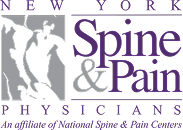Myofascial pain syndrome is a common cause of chronic pain in the muscles and their protective lining, the fascia. Tender knots in the muscle known as “trigger points” are the main finding with this type of pain.
You are likely to experience short-term muscle pain at some point in your daily routine, as a result of stress, repetitive motions, or injury. However, if muscle pain lasts for months at a time, chronic pain has settled in and you have myofascial pain syndrome.
Myofascial pain syndrome can limit work, cause weakness, and interfere with sleep. Fortunately, it can improve with treatment. A pain management doctor can help you break the pain with trigger point injections and other muscle-relaxing therapies.
The trigger point
The hallmark of myofascial pain and dysfunction are tender points in your skeletal muscles: the trigger points. It is thought that initial injury causes the muscle to remain tense all the time, and creates the trigger point. A vicious cycle starts as the muscle becomes inflamed and suffers from a lack of blood flow and oxygen. At first, trigger points are painful only if pressure is applied to them. However, if left untreated, they hurt constantly.
According to a study conducted at a primary care clinic at the University of California Los Angeles (1)
“Of 54 patients whose reason for a visit included pain, 30% satisfied criteria for a clinical diagnosis of myofascial pain”
Symptoms
Myofascial pain syndrome results in clear physical findings like trigger points, or it can cause general symptoms like sleep disturbances and fatigue.
Signs and symptoms of myofascial pain:
- Tender knots
- Twitching or cramping
- Restricted range of motion
- Pain over an injured area
- Sleep and/or mood disturbances
Direct causes
Myofascial pain syndrome can start with a direct injury to the muscles, or it can signal a problem at a deeper level in the body (referred pain).
Direct muscle injury can start with:
- Repetitive motions
- Sport injuries
- Heavy lifting
- Poor posture
- Inadequate recovery time after physical work
- Physical stress in the work environment
Indirect causes – referred pain
Myofascial pain may be a sign of a deeper problem, such as misalignment in your skeletal and soft tissue system. For example, there may be a herniated disc, an abnormal curve in your spine (scoliosis), or scar tissue from an old surgery. As a result, the muscles over this problem area will tense up in an effort to protect it, thus becoming painful themselves.
Referred muscle pain can be caused by:
- Whiplash
- Skeletal disorders (scoliosis)
- An underlying cause of pain (herniated disc)
- Shoulder impingement syndrome
- Cervical radiculopathy (disc is pressing on a nerve causing neck pain)
“Patients with pain in their upper bodies (neck, back) were more likely to have myofascial pain than patients with pain located elsewhere.”(1)
Areas affected by myofascial pain
Although the neck and upper back are common places for myofascial pain syndrome, it can occur anywhere in the body.
- Areas affected:
- Neck
- Upper back
- TMJ (Temporomandibular joint dysfunction – pain in the jaw muscles and joints as a result of stress and tooth grinding)
- Head (migraine, tension-type headache)
When to see your doctor
Myofascial pain syndrome is usually a treatable condition. Make an appointment with your doctor if your muscle pain lasts for more than several weeks or if it does not improve with rest, massage and other self-care measures. If you had a recent trauma (car accident, fall) you should see a doctor immediately in order to rule out serious underlying problems, such as fractures or herniated discs.
Diagnosis
Your doctor will perform a physical exam to look for tender nodules in your muscles. You will feel increased pain and possibly a muscle twitch (a “jump sign”) when the doctor presses on a trigger point. Physical exam and a thorough pain history are usually sufficient to make a diagnosis. It helps to tell your doctor about all your pain symptoms and any past injuries or surgeries.
Commonly applied therapies for myofascial pain provided substantial abrupt reduction in pain intensity. (1)
Treatment
Myofascial pain can improve considerably with trigger point injections and medications from your doctor, as well as physical therapy and self-care techniques (2,3).
Trigger point injections
- Trigger point injections with numbing agents and/or steroids – this is one of the most effective treatments for myofascial pain. A doctor injects numbing agents and/or steroids directly into a trigger point.
- Trigger point injections with Botox – Botox (Botulinum toxin) is an injected substance that acts on the nerves to diminish or prevent muscle contraction. It shortens pain episodes and reduces the number of trigger points. It is slow acting (up to four weeks for full effect) and its effects are long-lasting (months).
- Dry needling – repeated insertion of a needle into the trigger point or in several points around it, helps break up muscle tension.
Medications that reduce muscle pain
- Anti-inflammatories – are over-the-counter medications (like Motrin®, Aleve®, etc.) commonly used to decrease inflammation and pain. Their long-term use is limited by their effects on the gastrointestinal system, kidneys, and platelets.
- Muscle relaxants – are oral medications that decrease muscle tension and are often used early in the treatment plan.
- Topical creams or patches – contain local anesthetics (like Lidocaine), anti-inflammatories, Capsaicin, that diminish pain sensation.
- Tramadol – is a narcotic-like medication. While narcotics are not used effectively for muscle pain, Tramadol can help with underlying pain (herniated discs, arthritis joint pain, residual surgical pain, etc.) that cause referred muscle pain.
Physical therapy and other techniques for muscle pain
- Post-isometric relaxation – a therapist brings the painful muscle to its maximum length while the patient resists with minimal force (isometrically).
- Laser therapy – light therapy is used to reduce muscle pain, inflammation and swelling.
- Ultrasound – sound waves are used to increase blood circulation and warmth to the muscles.
- Massage – increases blood circulation, thus increasing oxygen in the muscles and removing toxins.
- Stretching and strengthening – reduces weakness and muscle tension/spasm, while improving range of motion.
- Myofascial release – a therapist applies gentle pressure to the fascia (tissue that lines muscles) if it has become stiff and restricted after trauma or inflammation.
Outcomes
In some cases, muscle pain lasts after an injury has healed. It may spread to surrounding muscles as “satellite trigger points”. This signals a transition from short-term pain to chronic pain and requires a doctor’s care and expertise.
While either trigger point injections, physical therapy or an improved posture may calm myofascial pain, you may benefit from a combination of these therapies. Therefore, Repeated visits to your pain doctor will help you keep the pain under control.
Pain prevention
Simple things that you can do to relieve muscle pain and why they help:
- Posture training – improving your posture can help relieve myofascial pain, particularly in your neck and upper back.
- Frequent breaks – prevent muscle pain when you’re stuck in an uncomfortable position working, or while doing chores.
- Heat and cool – heat, such as a hot pack or a hot shower, relieves muscle tension; cold (ice pack) reduces inflammation.
- Exercise – stretching and light exercise increases blood flow and oxygen to the muscles, therefore helping them heal.
- Epson baths– have an outer relaxing effect on muscles.
References
- Skootsky SA, Jaeger B, Oye RK. Prevalence of myofascial pain in general internal medicine practice. West J Med. 1989 Aug; 151(2): 157–160.
- Desai MJ, Saini V, Saini S. Myofascial Pain Syndrome: A Treatment Review. Pain Ther. 2013 Jun; 2(1): 21–36.
- Wheeler AH. Myofascial pain disorders: theory to therapy. Drugs. 2004;64(1):45-62.




.2508191744197.jpg)
.2503201349082.jpg)
